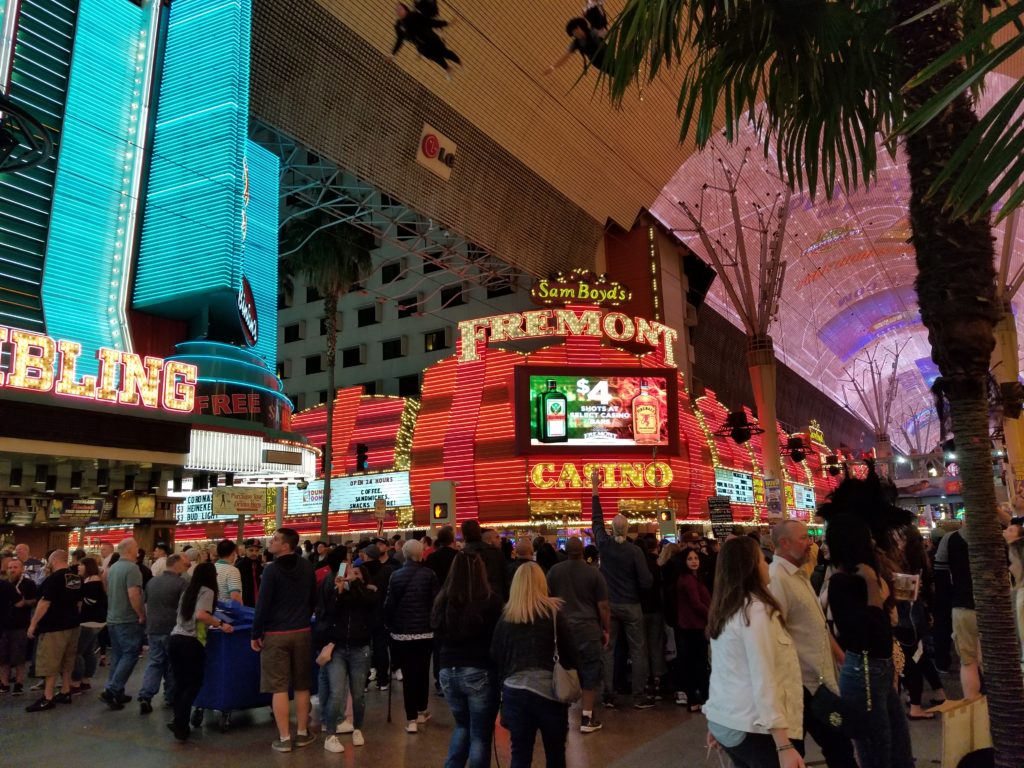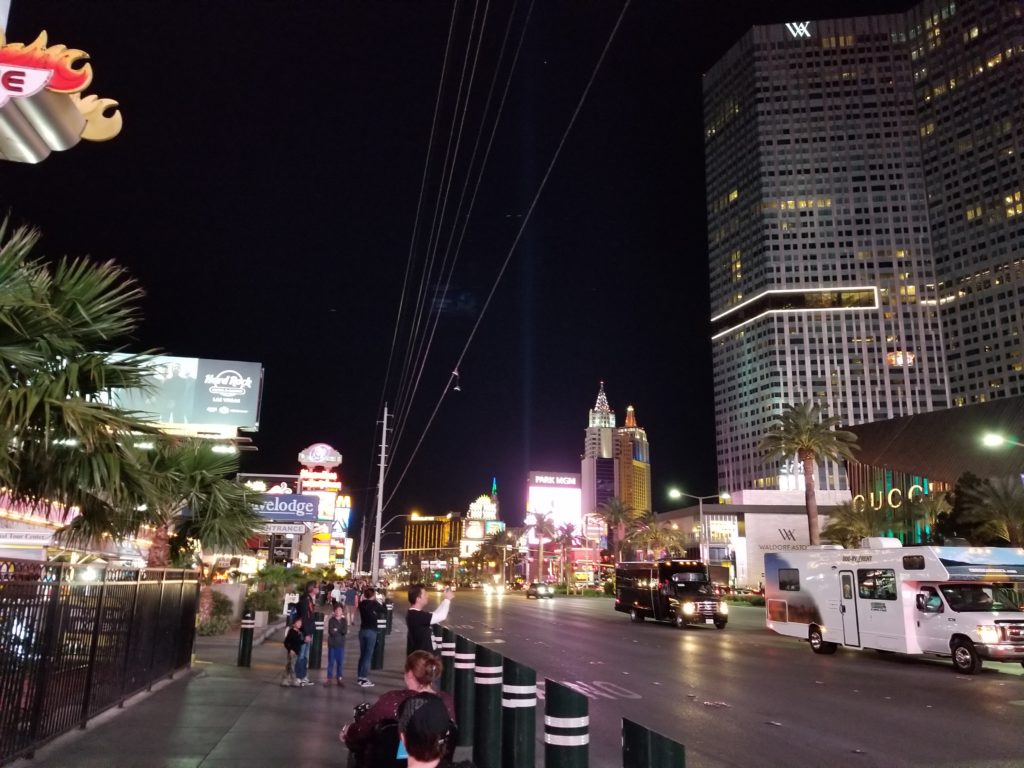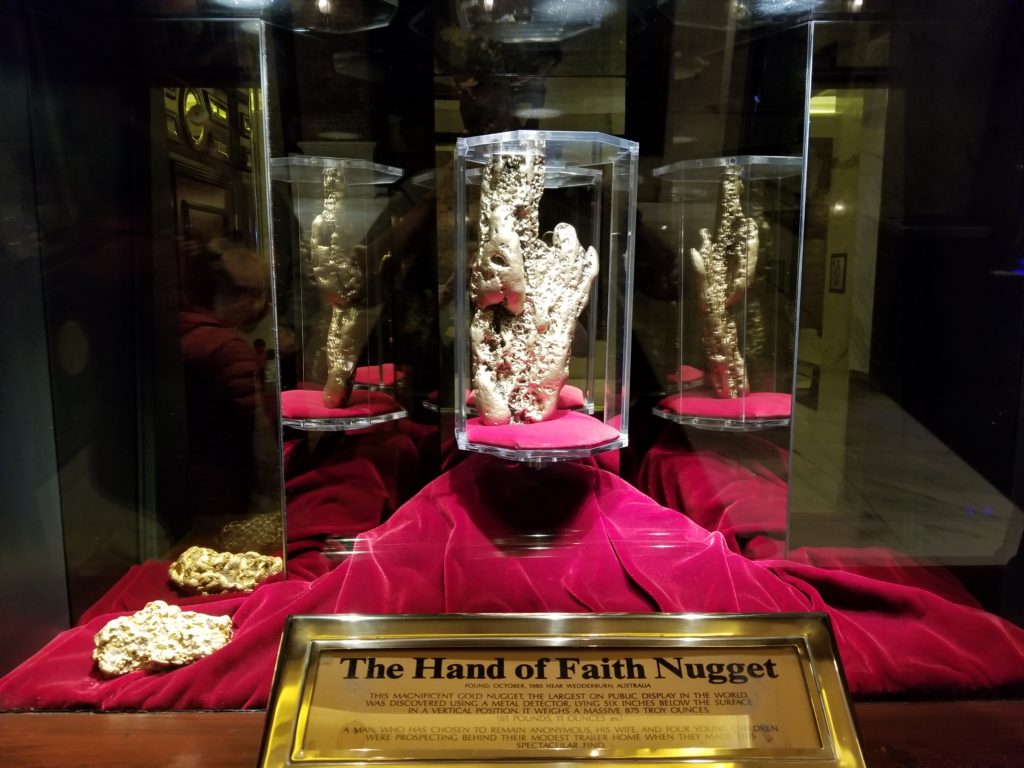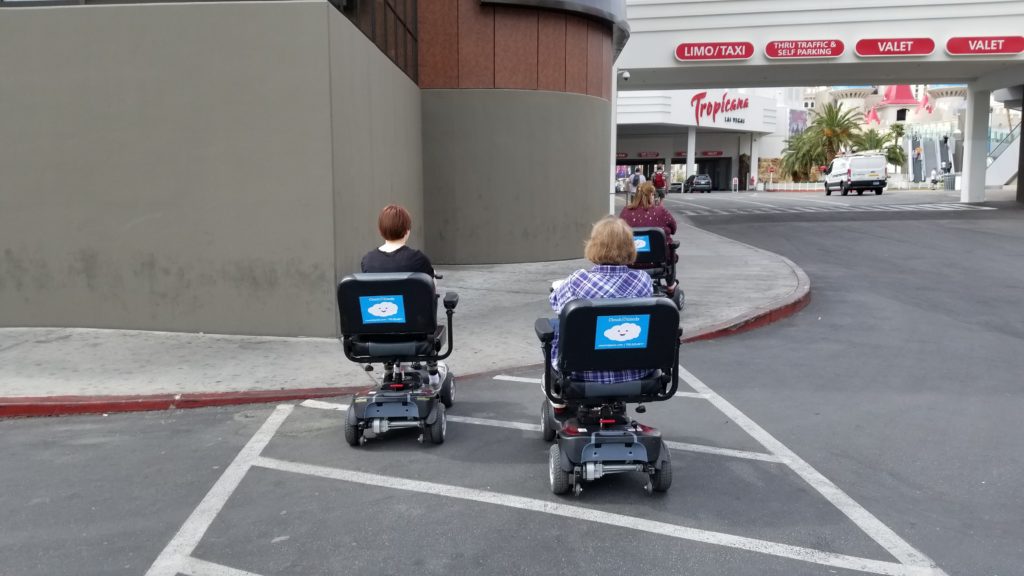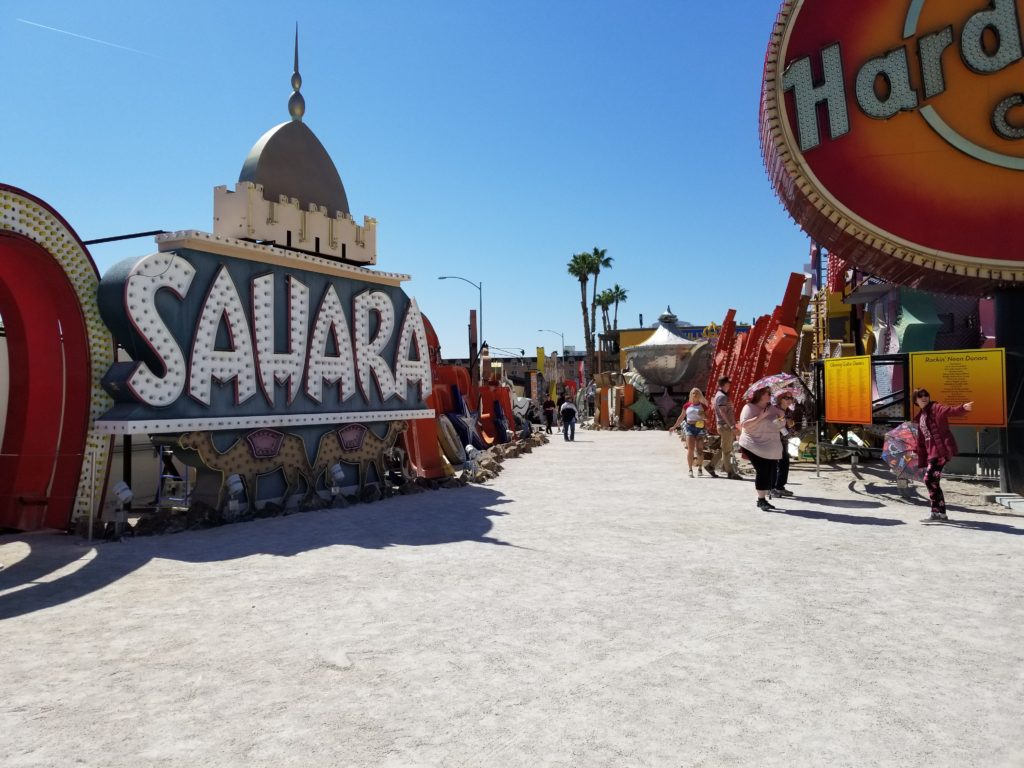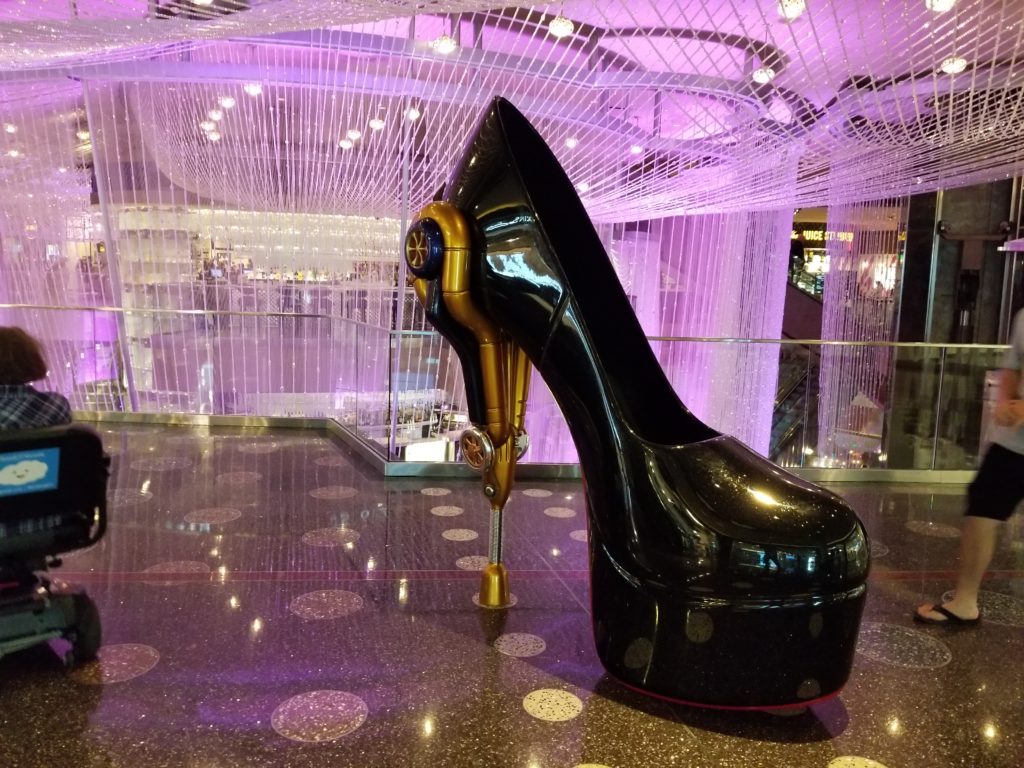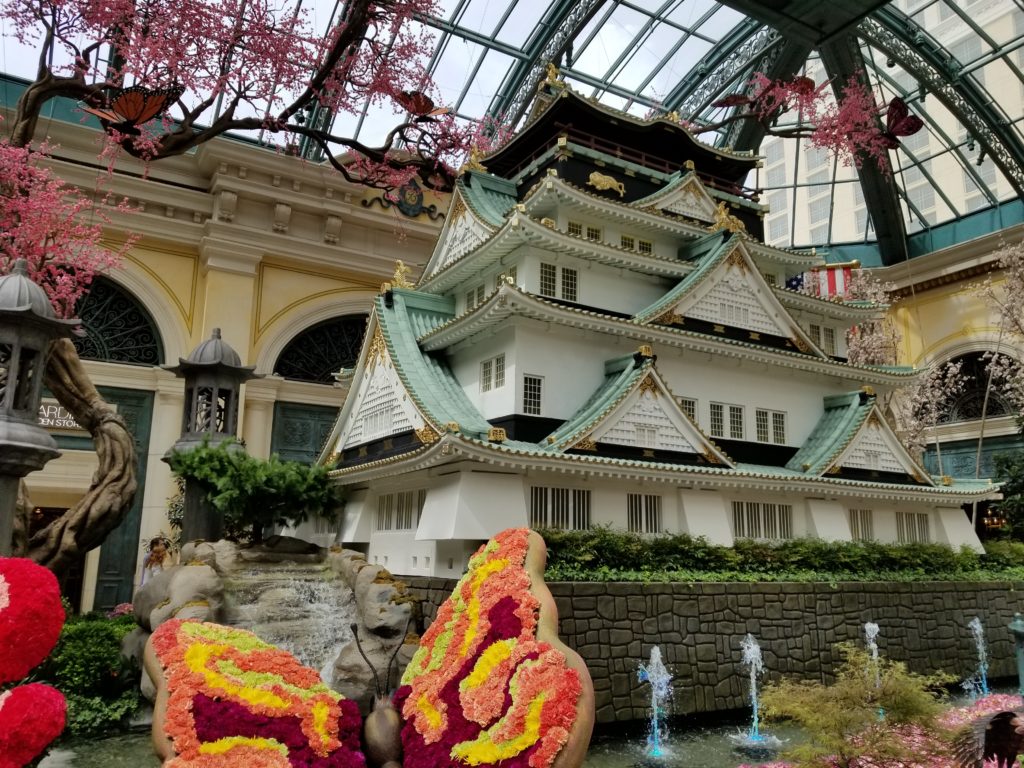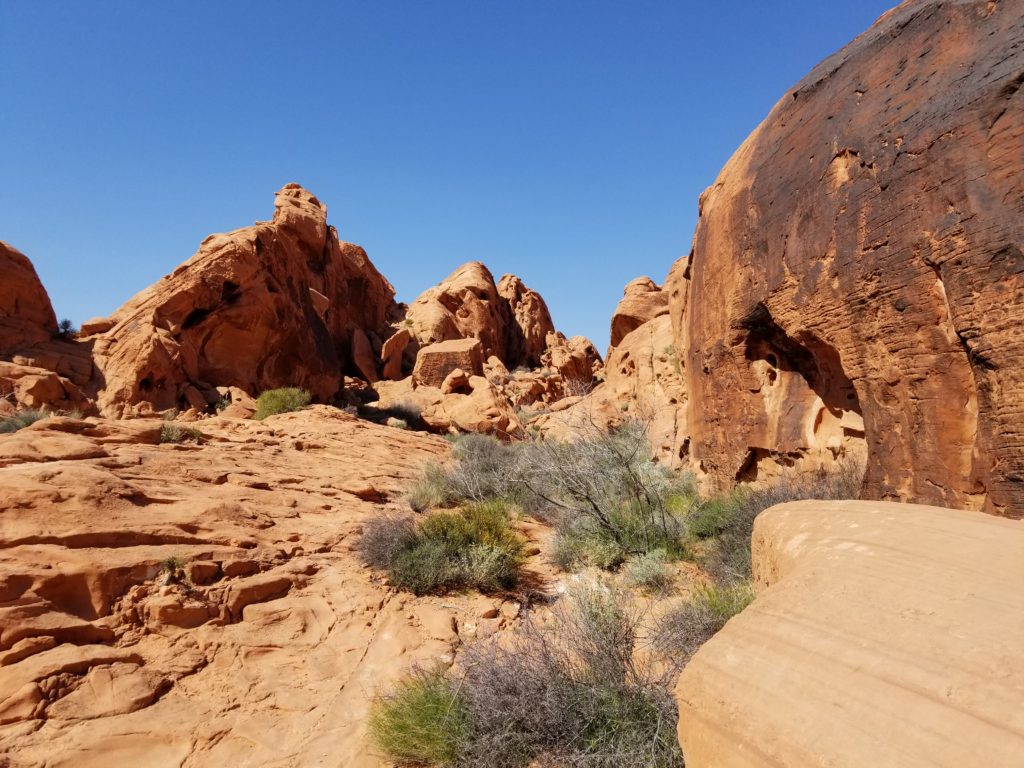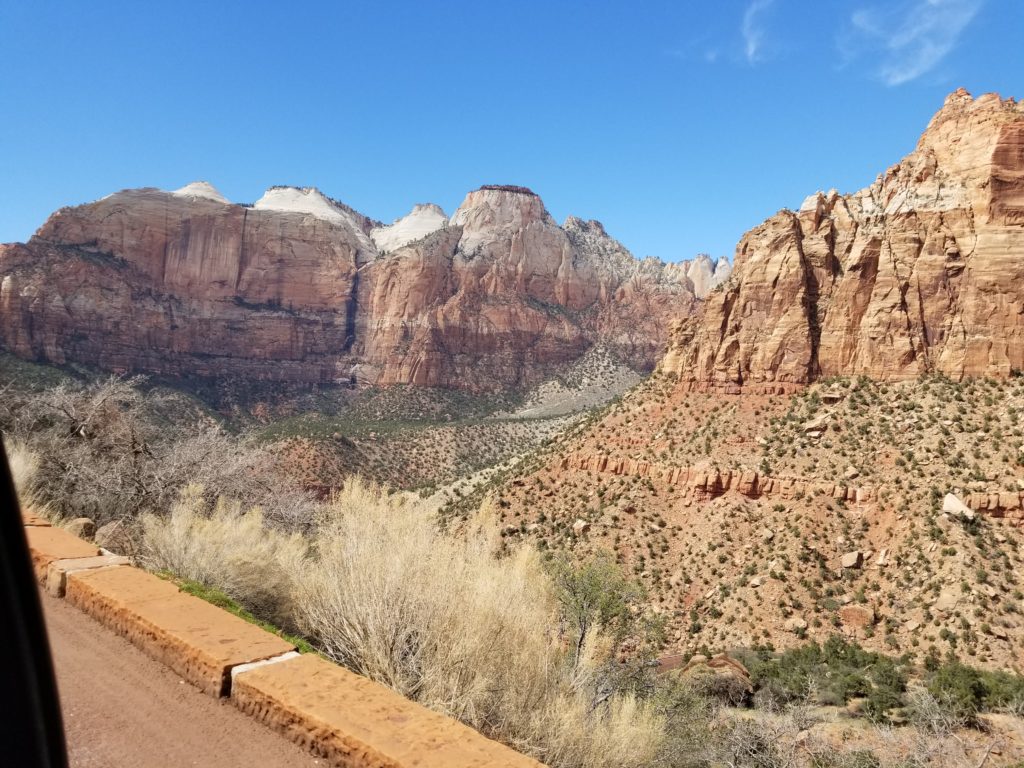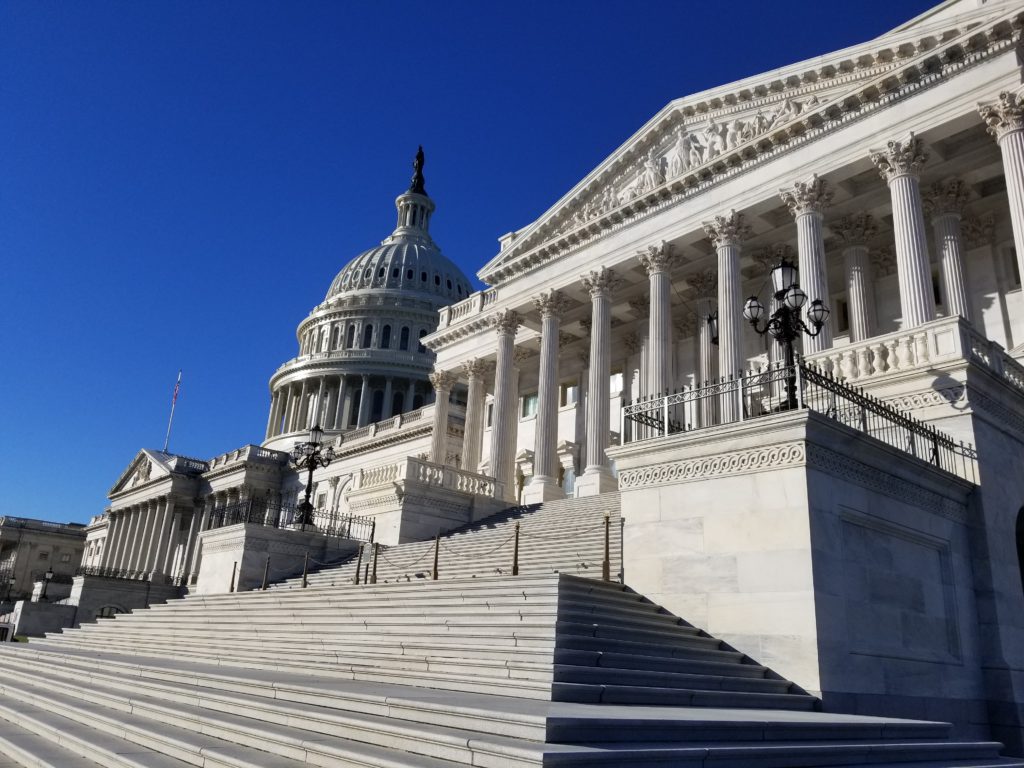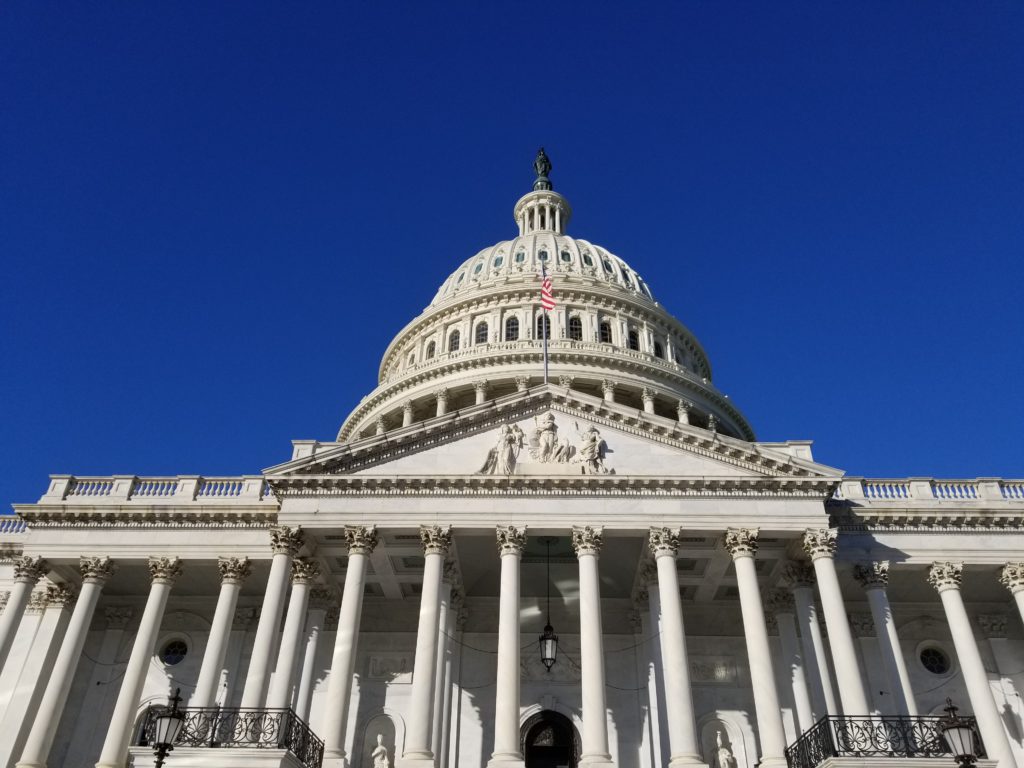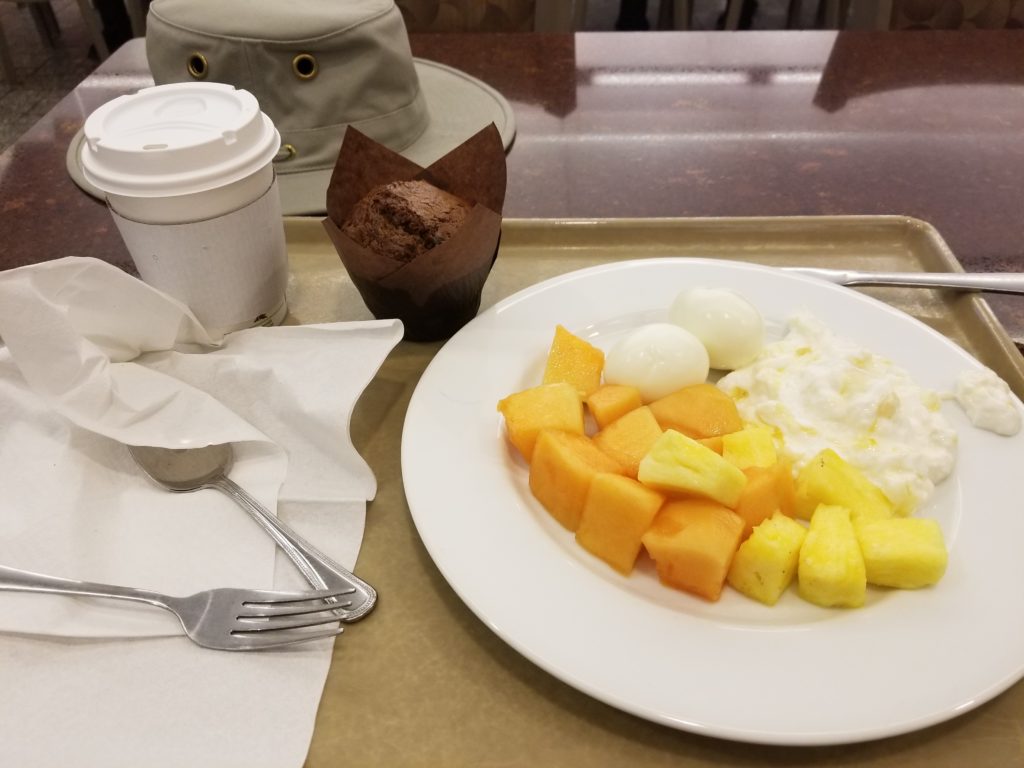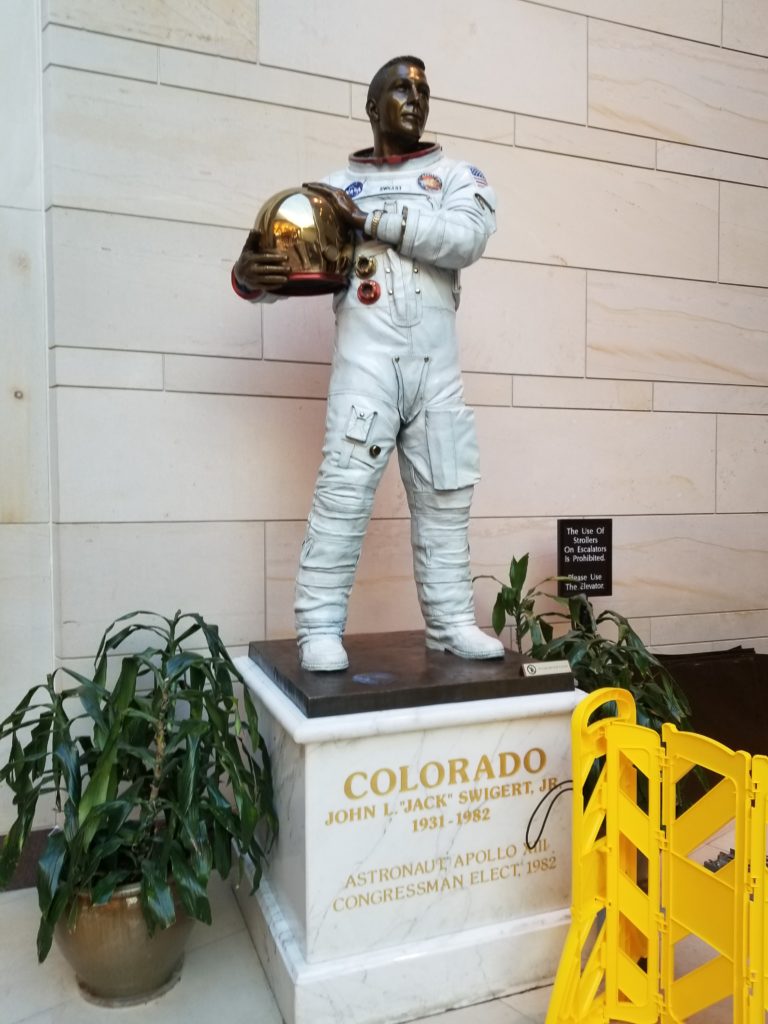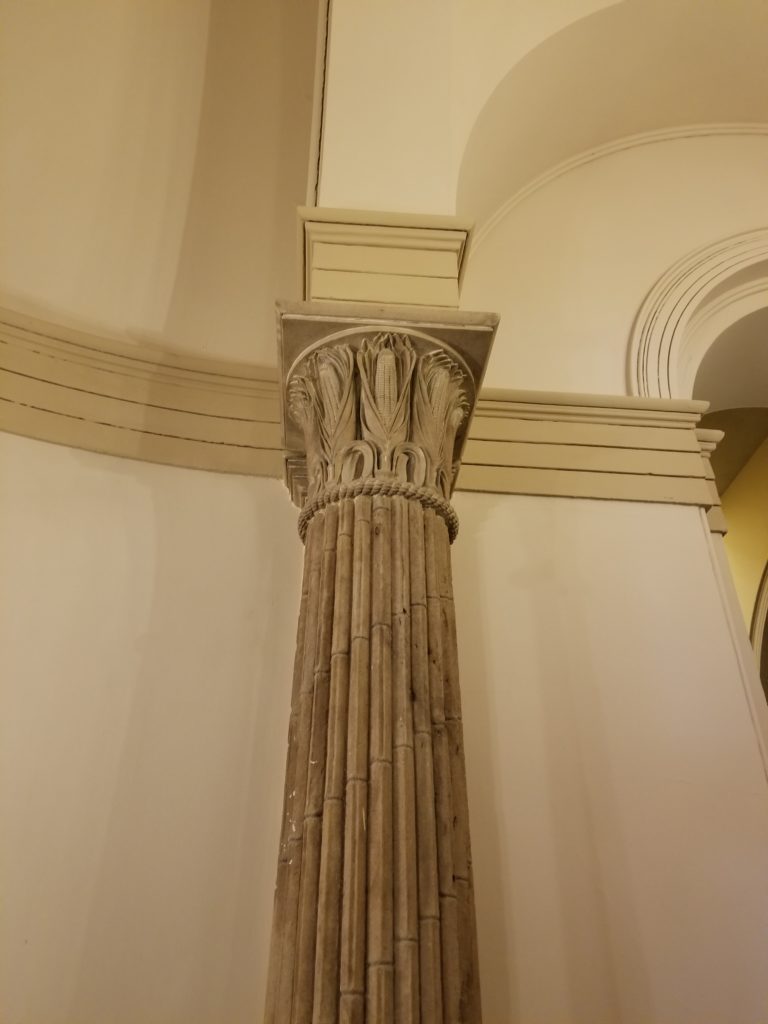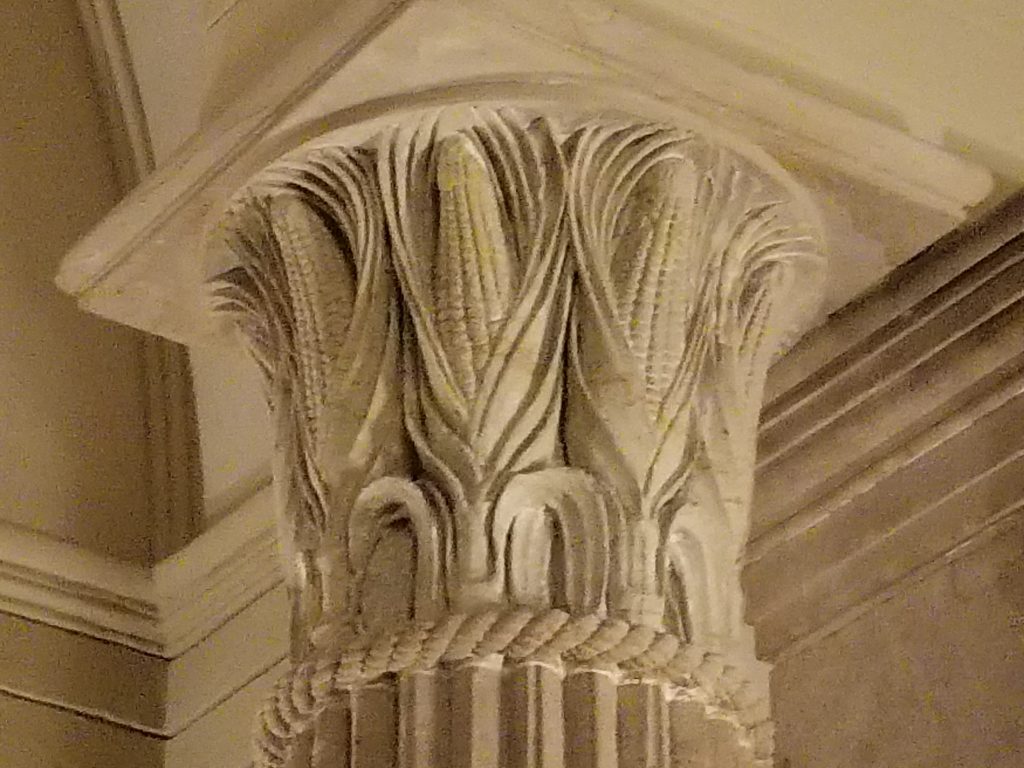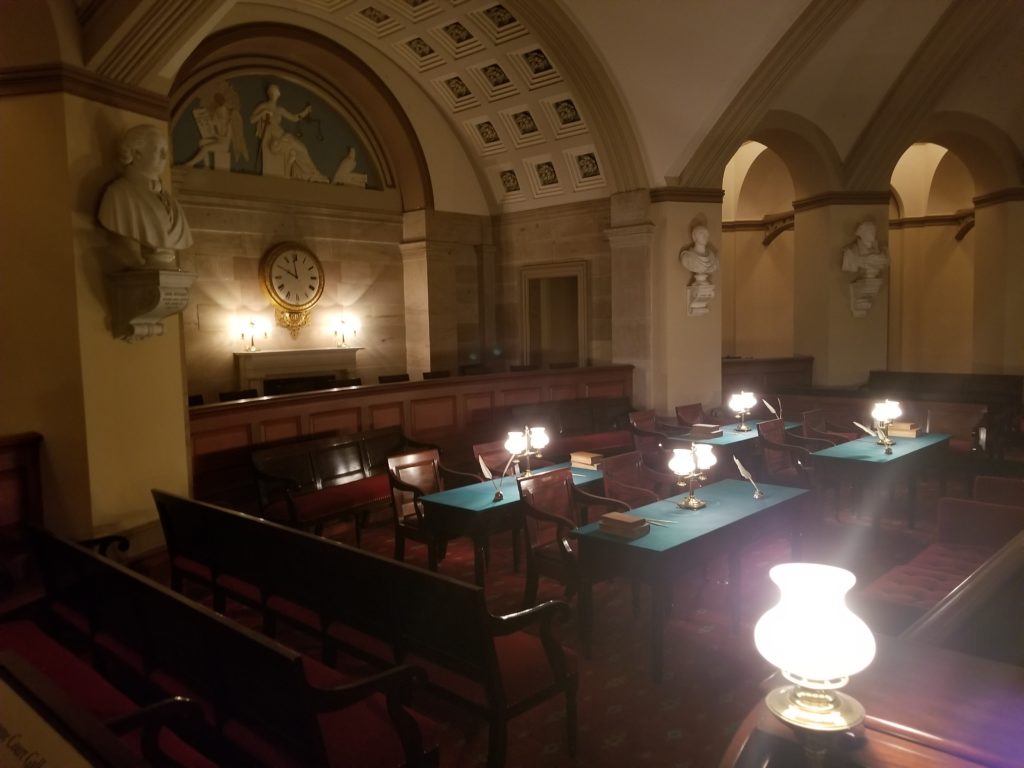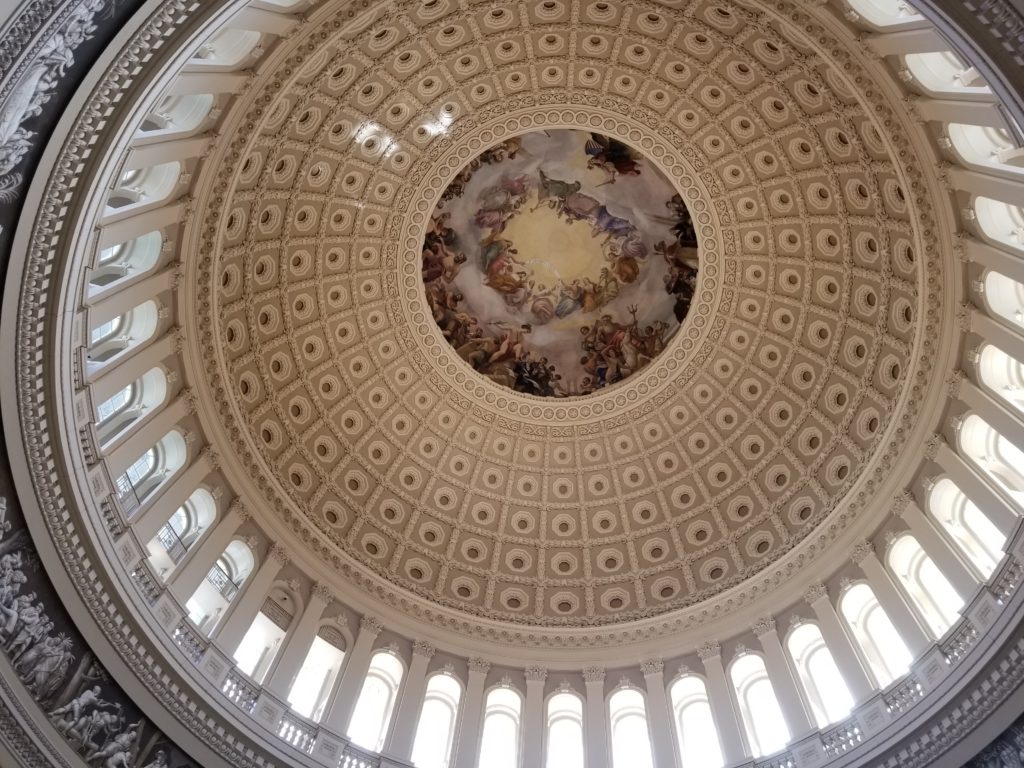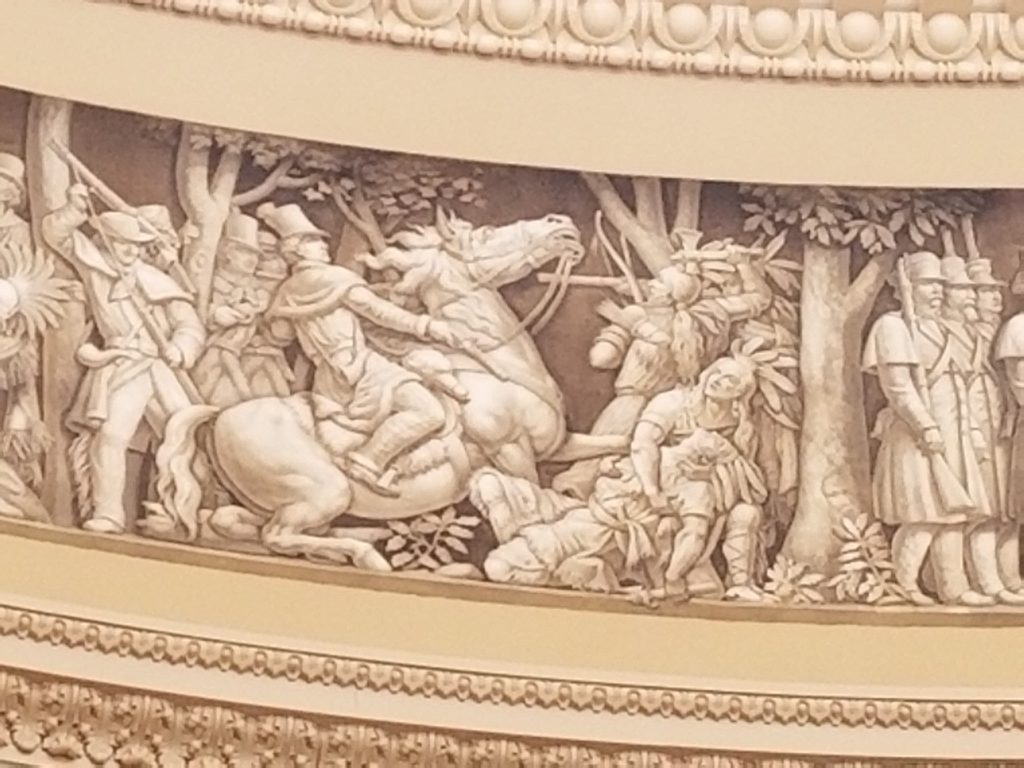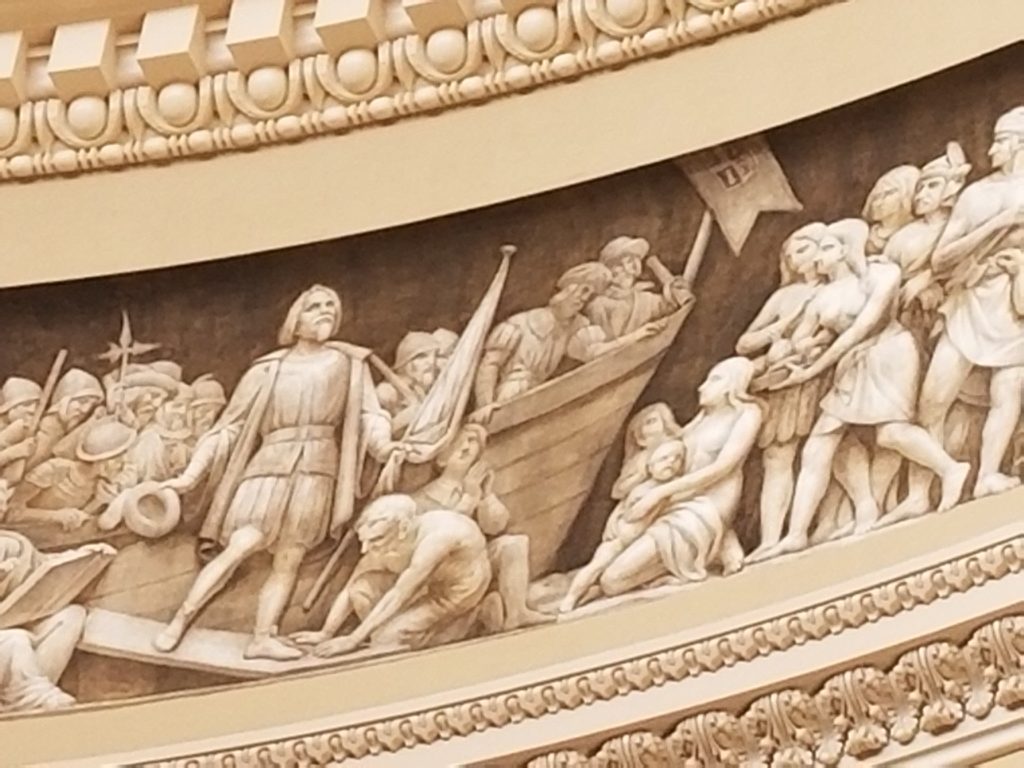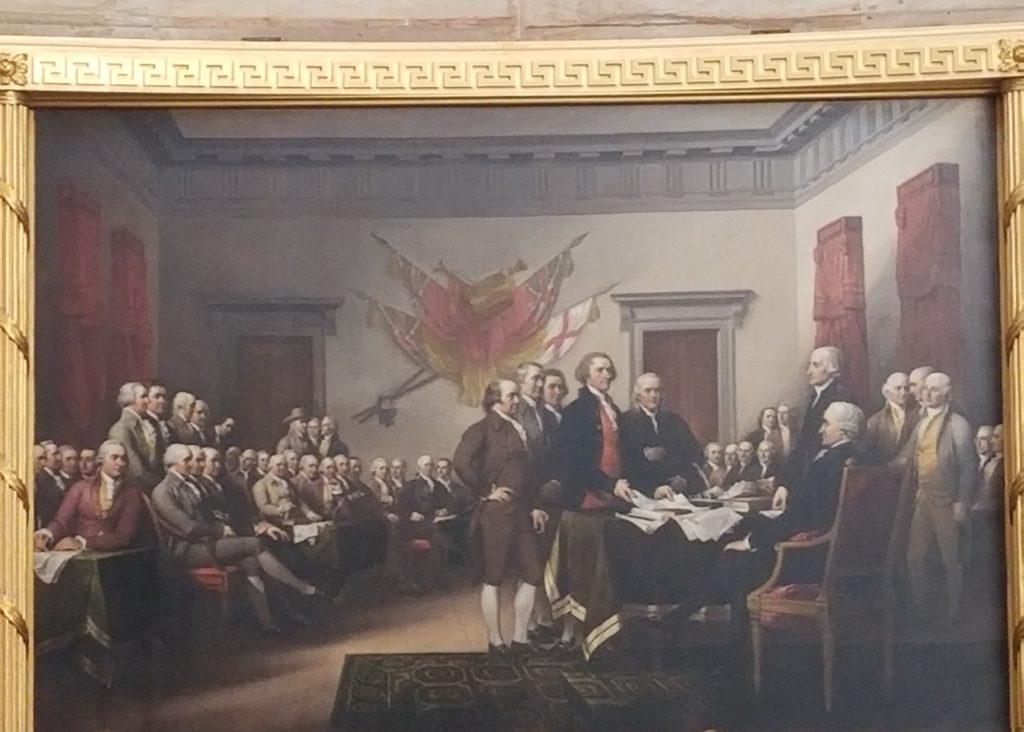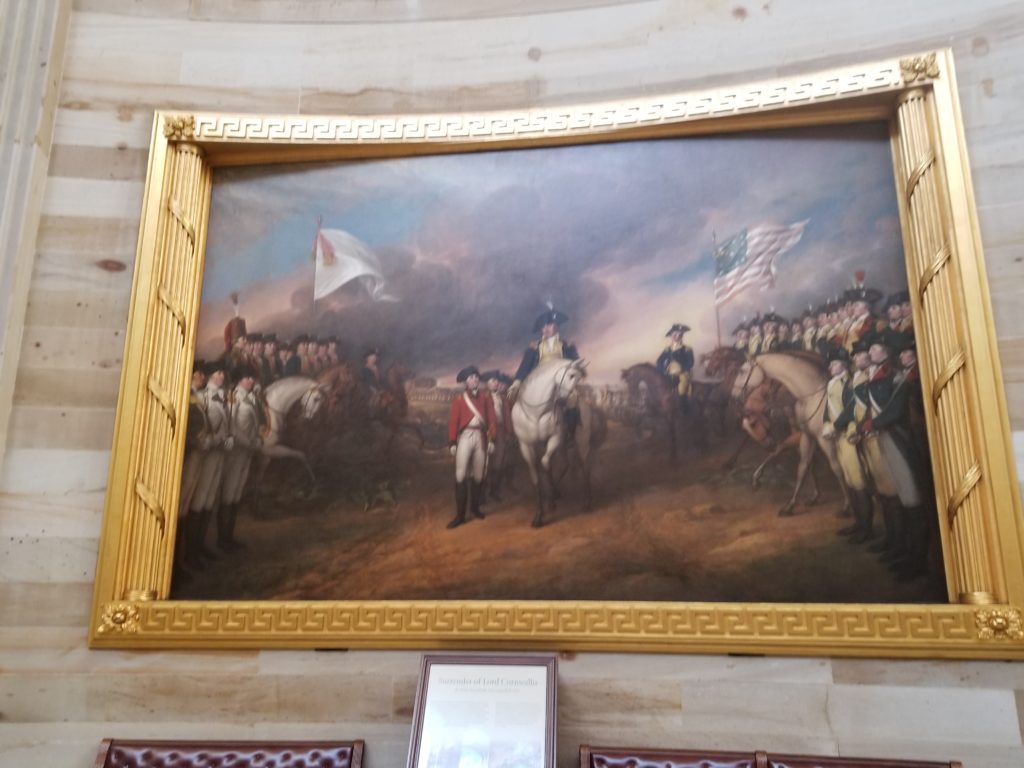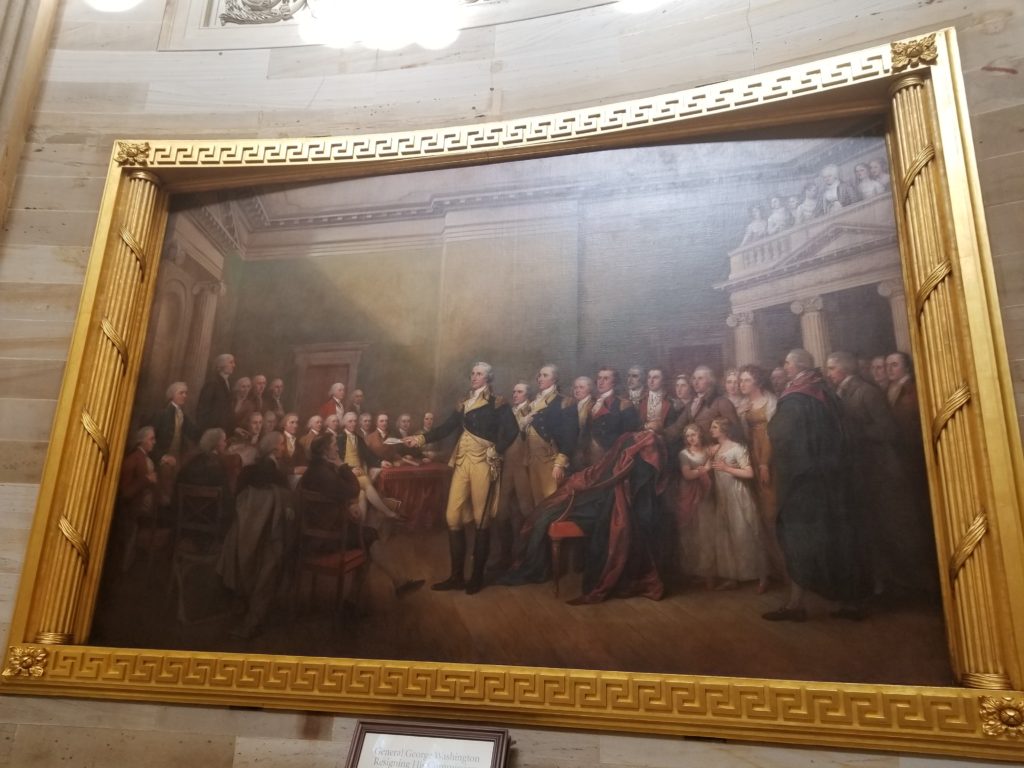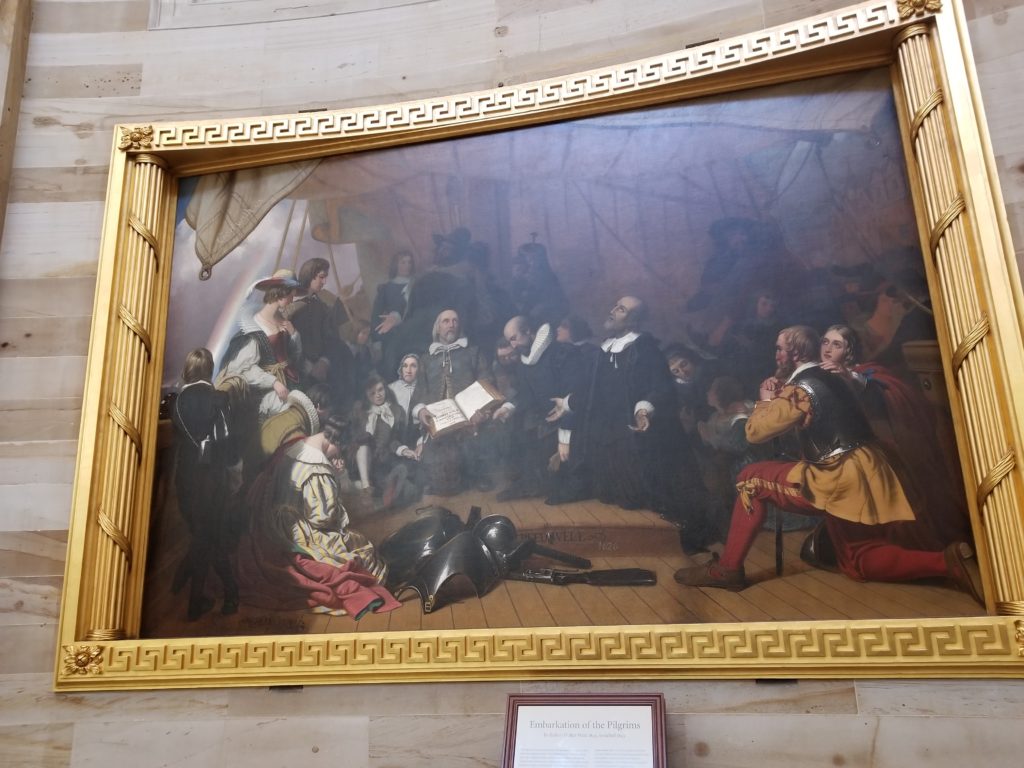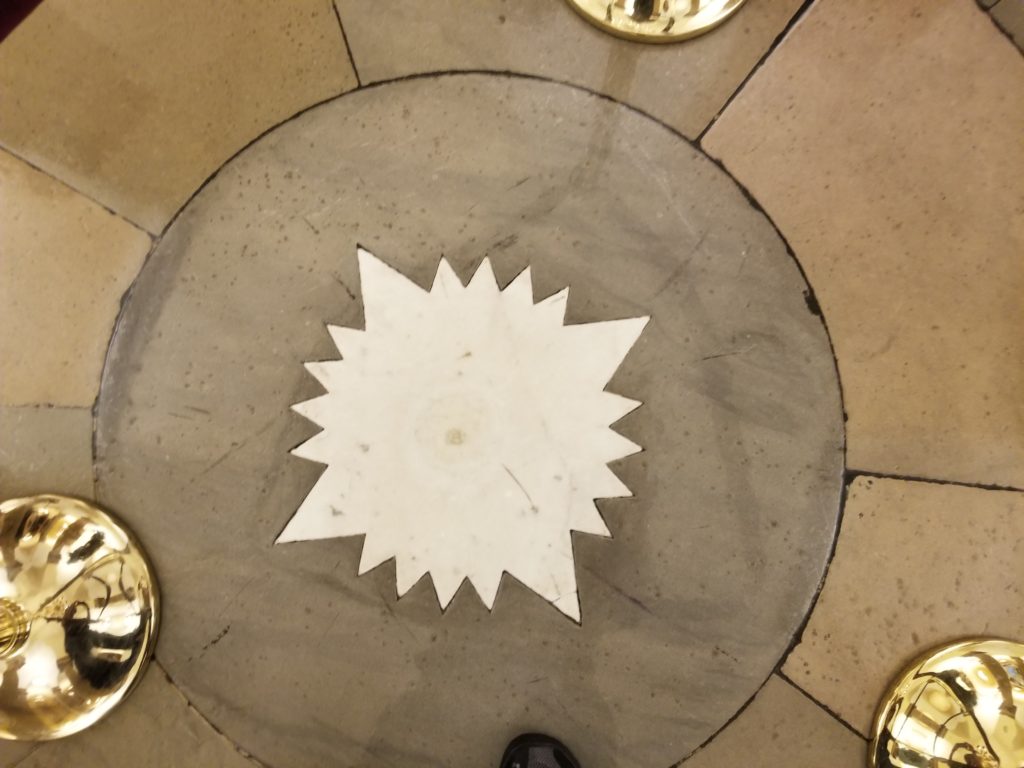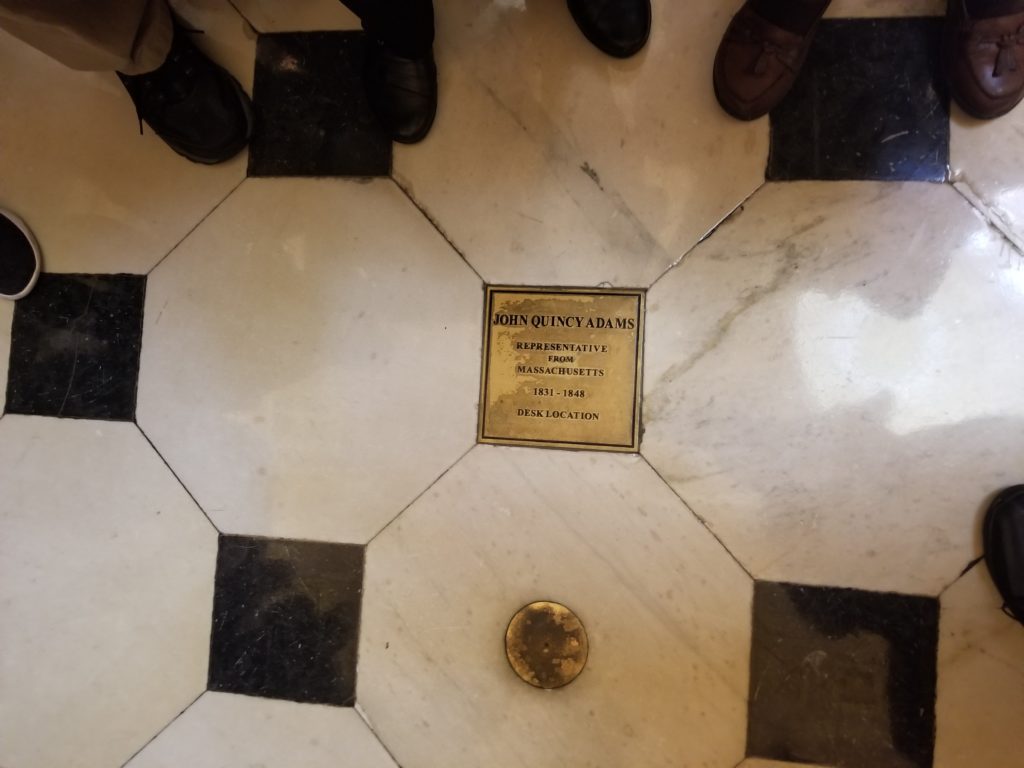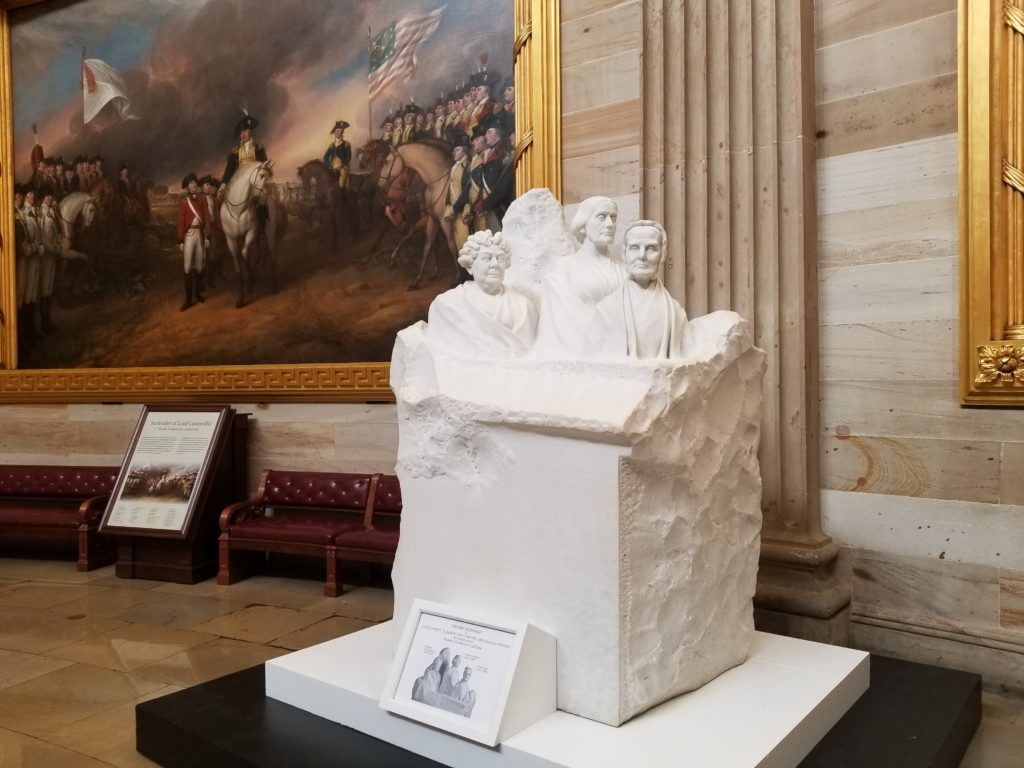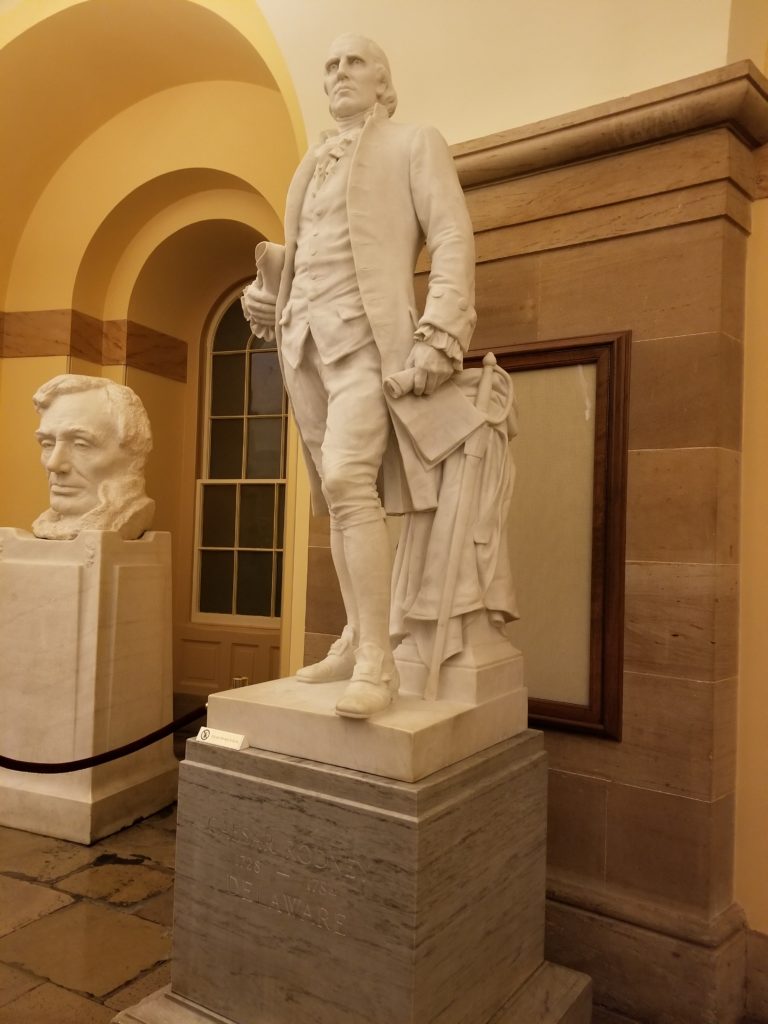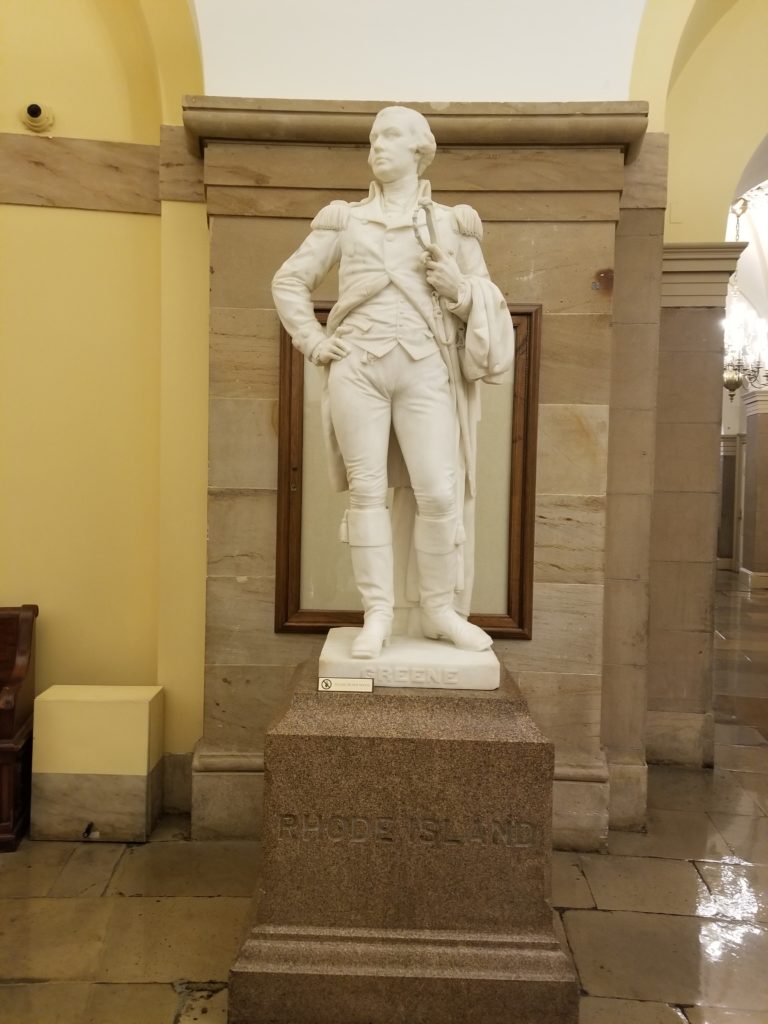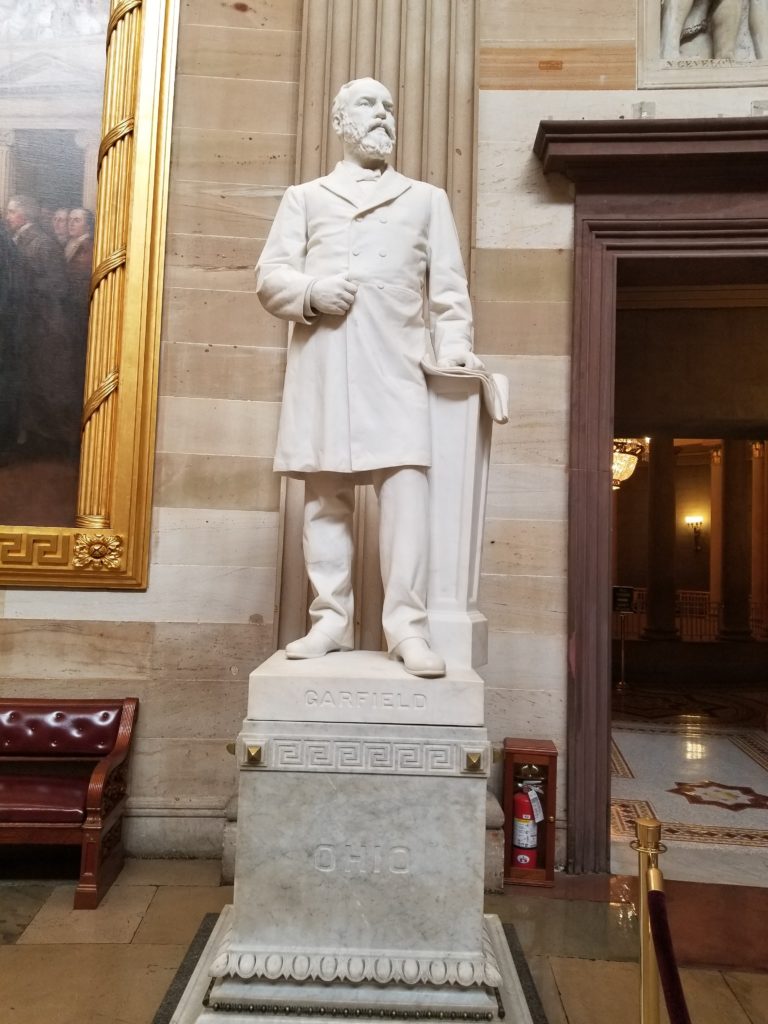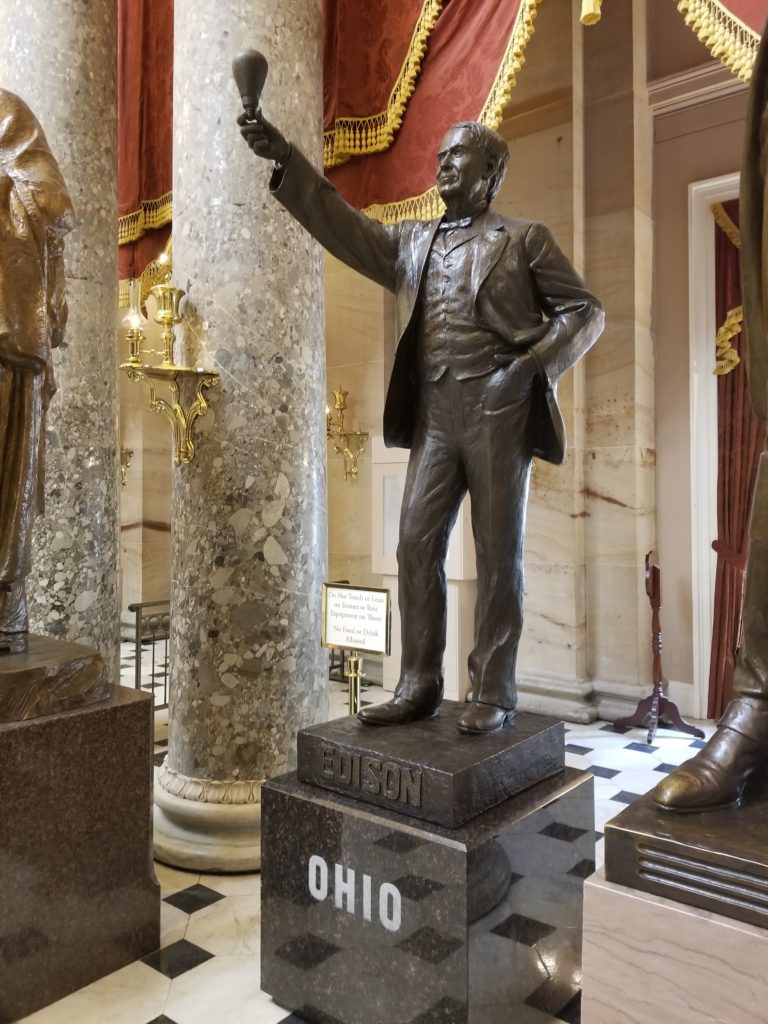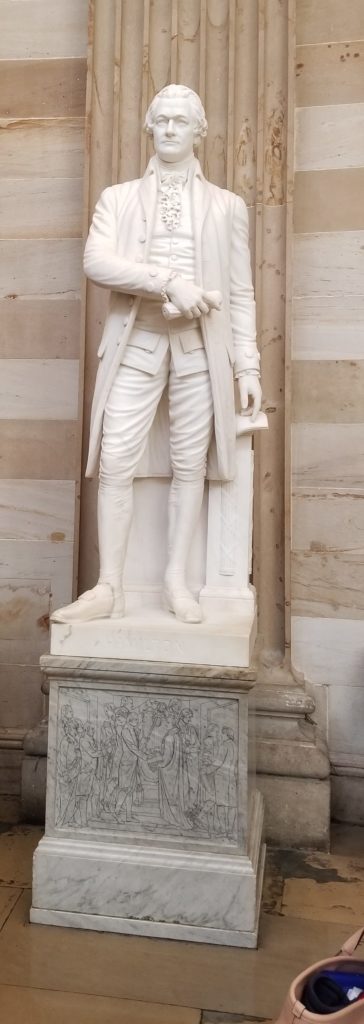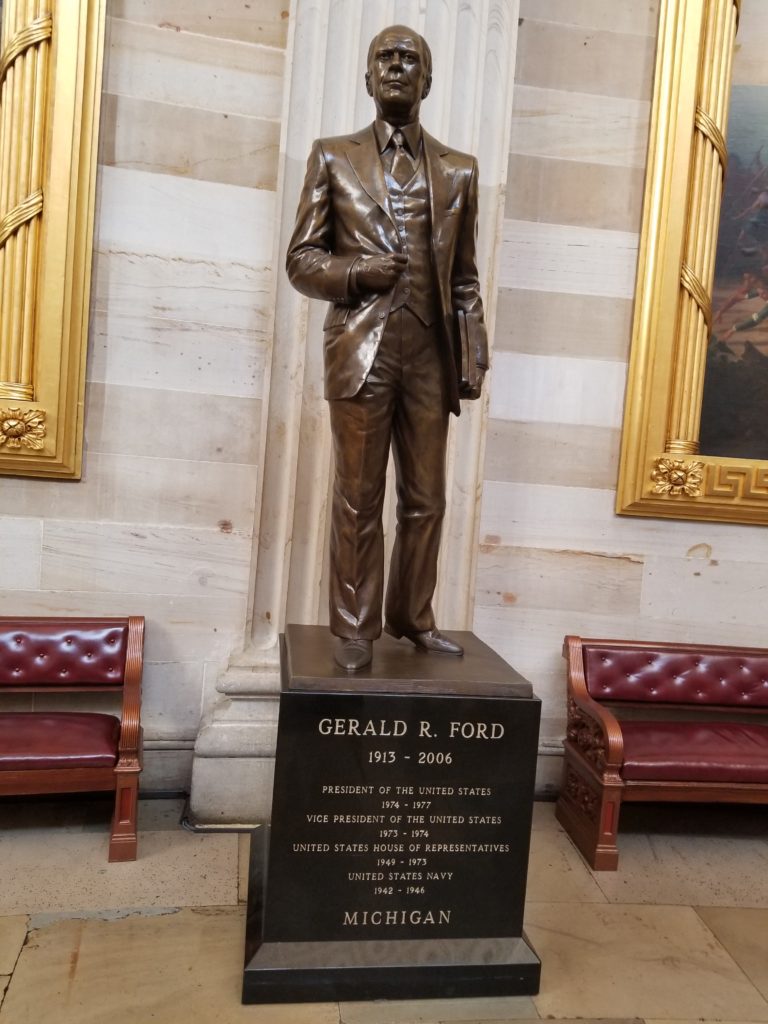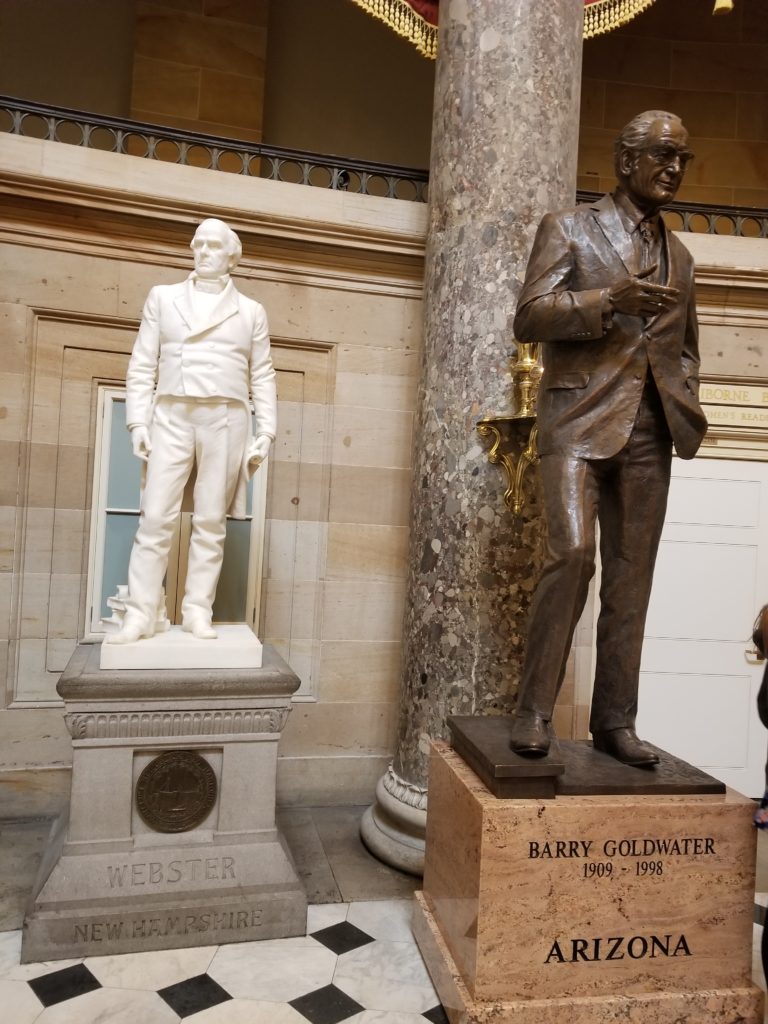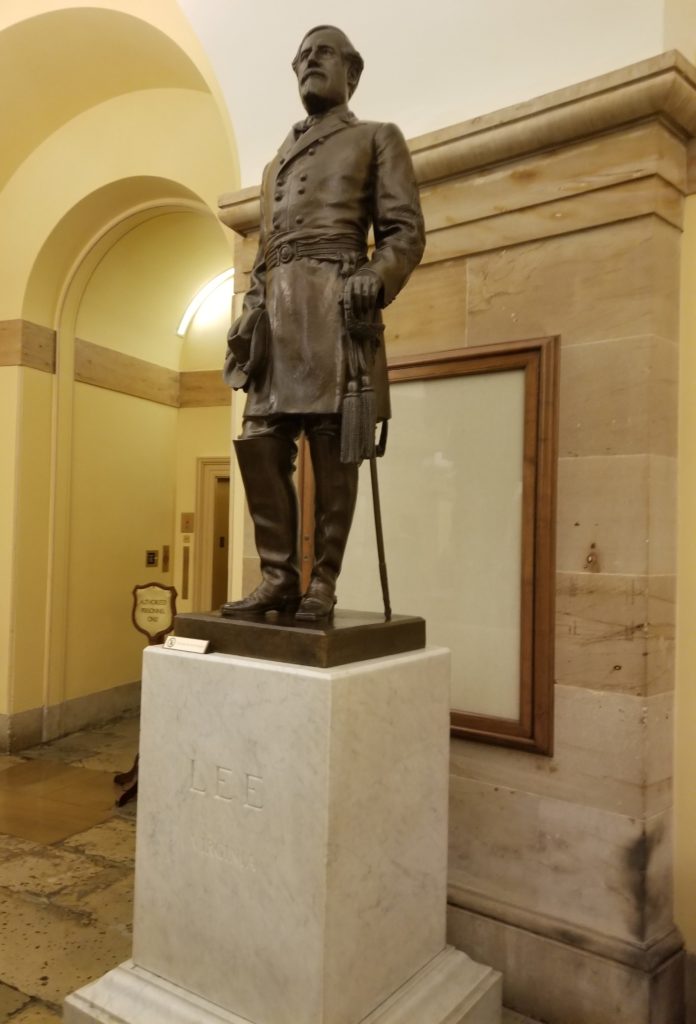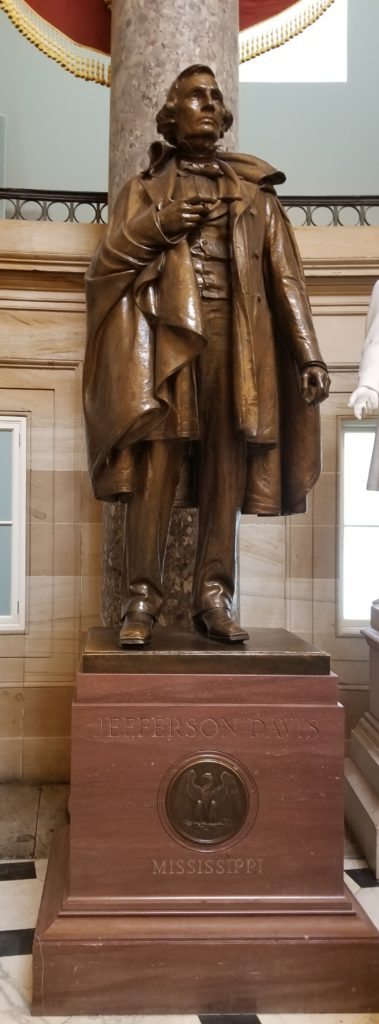Nuclear Tourist
I like to visit some unusual places. One term for it is “dark tourism” and I would agree that visiting one of the most bombed pieces of real estate on Earth is definitely “dark.” Some years ago, I learned that it was possible to visit the Nevada National Security Site (NNSS) (formerly known as the Nevada Test Site) where the U.S. government performed full-scale nuclear testing between 1951 and 1992, and where there is still plenty of interesting nuclear research that the Department of Energy still conducts.
After signing up a year in advance (the weekly tours fill up quickly and are very popular), my wife Terrie and I were ready to get a tour of a nuclear test site in the middle of the Nevada desert. We made a special trip to Las Vegas for our tour and stayed at the Embassy Suites by Hilton, which is just a short walk away from the National Atomic Testing Museum where our tour began. I had visited the museum before, and it features lots of fascinating exhibits about various nuclear tests performed by the U.S. both as weapons of war and potential tools of peace. As we were waiting for our tour bus, Terrie and I noticed mostly middle-aged couples like ourselves. As we picked up our government-issued visitor badges Terrie wondered aloud how many of the husbands had to convince their wives to come along on a tour of a nuclear test site. We boarded a tour bus and drove northwest out of Las Vegas on U.S. Highway 95 on our 65-mile journey to the entrance of the (NNSS) in Mercury, Nevada.
A Little Bit of History
The NNSS was created as the Nevada Proving Grounds by President Harry Truman at the end of 1950 to provide a more economical alternative to previous U.S. nuclear testing that had mostly been performed in the Pacific Ocean (e.g., the Bikini Atoll test of 1946). Starting in 1951, nuclear tests involving air-dropped devices from B-50 bomber aircraft were conducted at the site, which is larger than the state of Rhode Island. These tests were followed by above-ground testing that involved devices detonated from towers, suspended from balloons, and even one that was fired as an artillery projectile from a cannon. Quite a few of these tests involved evaluations of how various structures (bridges, forests, houses, and even bank vaults) would withstand nuclear detonations. Other evaluations involved live exercises involving soldiers to determine how they would psychologically react to a nuclear detonation and some tests involved animals (pigs were favored because their skin and organs are similar to those of humans) to determine direct radiation, heat and blast effects on people.
Much of the nuclear testing was performed as a part of the Cold War with the Soviet Union where both the U.S. and Russia tested larger and larger nuclear devices to achieve increased yield. Eventually political and environmental concerns prompted both the U.S. and Russia to voluntarily stop testing in 1958 as the Cold War had a brief thaw. However, a few years later tensions had increased due to events such as the building of the Berlin Wall and the downing of a U.S. U2 pilot Gary Powers. These increased tensions prompted the Soviet Union to unilaterally break the testing moratorium in October 1961 with the largest nuclear test yet performed (50 megatons). After the break in the moratorium, testing at the Nevada Test Site (later renamed the NNSS) significantly increased until in 1963 when the U.S. and the Soviet Union entered the Limited Test Ban Treaty, which banned all testing of nuclear weapons above ground.
Also, during the 1950s and 1960s there was a great interest in determining if nuclear devices could be used for peaceful purposes such as excavation, construction, and even natural gas exploration. These tests did prove that nuclear devices can be used for peaceful purposes, but by the 1970s environmental concerns prompted the end to such testing. After 1963, all tests of nuclear devices were performed underground, and these tests continued through the remainder of the 1960s until 1992 when another voluntary agreement was entered with Russia to stop all full-scale nuclear testing. That voluntary agreement has been in place to the present day (26 years at this writing).
Even though full-scale testing ceased in 1992, there has been plenty of nuclear research performed at the NNSS. Explosive testing of nuclear devices is performed with sub-critical yields, meaning that the nuclear devices do not go critical resulting in an actual nuclear explosion. The site also performs real-world training of police, firefighters, and other first responders where nuclear materials are involved (e.g., if a terrorist were to jacket a conventional bomb with nuclear material to create a “dirty bomb”). Also, the NNSS serves as a disposal site for all nuclear material used by the U.S. government, including for classified systems. One of the most fascinating items is the Joint Actinide Shock Physics Experimental Facility (JASPER), which is a large “gas gun” that fires a projectile in a barrel containing hydrogen gas at up to 8000 m/s (or about 17,900 mph) at various nuclear material targets under controlled conditions to simulate full scale testing.
Trip to Mercury
On the way to the NNSS entrance we passed Creech Air Force Base, which is where pilots train and fly actual operations with the Predator and Raptor combat drones. As we were driving by, we saw an unusual flying object that looked larger than a remote-controlled model airplane, but smaller than a single engine plane, such as a Cessna. Our guide, John, informed us that what we were seeing was indeed a Raptor and told us of the psychological challenges the pilots face of going to work, flying a bombing mission from half a world away, and then calmly going home to dinner with his family. I wondered at this technological marvel and how innocent it looked in spite of its formidable destructive capabilities.
We also passed what looked like a small church. According to John, this was the abode of an eccentric lady who was not exactly agreeable to the activities of the NNSS and would perform a dance ceremony for visitors to restore their fertility.
John had worked at the NNSS since the early 1980s and it was clear to us that he loved his job of conducting tours like ours. He seemed to have endless patience and stamina with answering questions, even when I noticed towards the end that some of the questions seemed to repeat earlier questions. One question that was commonly asked was if we would need radiation detectors as we toured the NNSS. John explained that the tour guides did originally wear radiation badges to see if tours received any significant doses of radiation, but discovered that there was no detectible difference, so they stopped wearing them. BTW, a radiation badge does not protect you at all, but simply tells you if you have already been exposed to too much.
At last we turned off U.S. 95 on the road that led to the main entrance. The first thing we noticed were two large “pens” made with fencing that to me resembled large dog kennels. John informed us that these pens were there to detain protestors who had illegally trespassed onto NNSS property. Upon being captured by the guards the trespassers would be detained in these pens until they could be shipped by bus to the Nye County Courthouse (in Tonopah, NV some 150 miles away) to face misdemeanor charges (from there it was up to the protesters to arrange their own transportation). John also explained why there were two pens. Apparently, the guards used to detain males and females in the same holding pen while awaiting transportation to Tonopah, but some of the detainees started getting too familiar with each other and “frolicking” (John’s own word) requiring them to be separated (to me, a dog kennel outside of a government facility in the middle of a desert did not seem to be the best place to “frolic” but I guess I am just picky).
Having solved the mystery of the pens, we were greeted by a guard at the entrance who worked for a private contractor (a typical situation for government facilities) and he checked to ensure we did not have any cell phones. Before going on our tour, Terrie and I had to read through all of the items that are forbidden on the tour, which included weapons, cell phones, cameras, and (interestingly) Geiger counters. John explained that if anyone was discovered with a cell phone once we entered the NNSS, the tour would be immediately cut short and we would be driven back to Las Vegas. We all left our cell phones behind or turned them into John when we got on the bus for safekeeping, so there were no problems.
Witnesses to Armageddon
Our first top in the NNSS was at the main cafeteria for a quick snack and bathroom break. We then set out on our tour of the NNSS. One could not help but notice numerous signs warning about areas where you should not gather soil or did due to possible radioactive contamination. Also, in some cases, we needed to take detours due to road closures caused by ongoing activities.
One of the first site we saw was an unimpressive set of rotting wooden benches off the side of the road. It turns out this was seating for VIPs who witnessed above- ground nuclear tests in the 1950s. Everyone witnessing the tests needed to wear protective goggles made of the same material as an arc welder’s shield because the flash from nuclear tests was bright enough to cause blindness. At another location we saw trenches dug into the desert floor where soldiers took part in an exercise that involved witnessing a nuclear test. The purpose of the exercise was not to determine effects of radiation on humans, but to determine if a soldier could function in the vicinity of a nuclear blast. At still another location were the remains of animal pens that were used for pigs (complete with soldiers’ uniforms) that were exposed to the nuclear explosion to determine survivability (spoiler alert: they didn’t survive).
For me it is terrifying to think that the U.S. and Soviet Union considered using battlefield nuclear weapons and we were reminded of that as we peered along a small side road that led to the site of the only test of a nuclear artillery shell fired by a cannon.
At another location we could see the artifacts that were used to determine how well they could withstand the effects of a nuclear explosion. At one location John pointed us to an area where a set of pine trees were set in cement to evaluate the effect of nuclear weapons on forests (the trees had to be brought in, as there were none to be found in the desert). Another site that we unfortunately did not have time to visit was the site of the “Apple 2” houses (not to be confused with the home computer). The Apple 2 houses were constructed in the mid-1950s using standard materials of the time to determine how effective civil defense measures would be in the event of a nuclear conflict. These houses were occupied by mannequins to simulate human inhabitants. This little “village” was featured in the film Indiana Jones and the Crystal Skull (yes, the one where Indy gets nuked in the fridge). John’s main complaint about the film was that there was clearly an anachronistic ’57 Chevy (complete with tail fins) shown in the village even though the test occurred in 1955 (clearly he was much kinder than most other critics).
We also drove past a bank vault and a series of bridges built to evaluate effects of nuclear blasts. The bank vault provided protection surprisingly well, but the bridges were mostly gone except for one. We got out of the bus and stood under the bridge. At first, I did not comprehend what I was looking at, but then I realized that the primary structural members of the bridge comprised of 24-inch I-Beams were completely bent into a hoop! John informed us that these beams were not melted by the heat but by the extreme blast “overpressure” caused by the explosion. For me this really drove home how powerful uncontrolled nuclear energy is.
Here are a few video links showing some of the weapons tests performed at the Nevada Test Site:
https://www.youtube.com/watch?v=5N0Balj2tLw
https://www.youtube.com/watch?v=ztJXZjIp8OA
Atoms for Peace and a Really Big Hole
Some of the research at NNSS involved peaceful uses of nuclear explosions. This was called Project Plowshare, named after the biblical passage about “beating their swords into plowshares.” We stopped at one location called Sedan Crater. This was a test performed in 1962 to determine how effective a nuclear explosion would be for large scale excavation. It turns out, you can plow a really big hole in the ground even with a fairly modest nuclear explosion (about 100 kilotons in this case). Nothing quite prepares you as you peer into the Sedan Crater. It’s absolutely huge! (320 feet deep and 1,280 feet in diameter) It’s so huge that it reminded me of the extinct volcanic crater at Mt. Capulin in New Mexico.
Here is a picture of us at the edge of Sedan Crater: Public Tour Photo 10-23-18 (see if you can spot me in my snazzy Tilley Hat on the left side of the picture)
We were also shown where the U.S. government disposes of its “low activity” nuclear waste. “Low activity” generally means waste that is not involved with nuclear weapons or nuclear power plants (e.g., spent fuel rods). Acres of real estate were set aside to carefully account for each item of waste, place it in containers that resemble cargo carriers, and bury them in the ground. We could see areas where the containers were in the process of being buried. We had this part of the tour conducted by another engineer (Bill) whose wife happened to be a member of our tour.
We asked John and Bill what it was like for people who currently work at the NNSS. Most people (Department of Energy civil servants and more numerous support contractors) live in Las Vegas and commute to the NNSS (about 2.5 hours per day). Many of these folks work four 10-hour days so they don’t need to commute as many days of the week and the NNSS provides bus transportation for those who wish to use it. There are two places to eat on the NNSS (the main cafeteria mentioned earlier and another smaller bistro). The staff at the bistro deserved high praise, because they were able to prepare food for our 50-person tour (including hamburgers to order) inside of 30 minutes. We also later found out they had stayed open late just for us because our tour was running late.
Détente and the $44 Million Museum Artifact
One of the most distinctive landmarks at the NNSS is the Ice Cap Test Site. This site was set up in cooperation with the British government to perform a test to determine the performance of a nuclear warhead as it re-enters the atmosphere after it is fired by a missile. This setup includes a tall white structure (over 100 ft. tall) with an elaborate set of cables and a shaft that extends another 100 ft. underground. We got out of the bus and were able to go inside the structure to see the equipment that had been set up for a test that never happened.
The reason this test never happened was politics. In the late 1980s, the U.S. and Soviet Union decided to reduce the number of nuclear weapons in the world and ended up eliminating all intermediate-range missiles. As a follow-up, the U.S. and Russia decided in 1992 to voluntarily stop all full-scale nuclear testing to also include underground tests. This voluntary agreement (that has never been signed as a formal treaty) meant that the Ice Cap test was abandoned in place. Apparently, the British were extremely peeved at this development, as they had spent some $44 million for this test and were apparently never reimbursed for their troubles. According to John, one participant in a tour for the UK military allegedly make a sardonic quip that the UK should start selling tickets to Ice Cap so they might recoup some of those lost funds.
Even so, it was fascinating to see a nuclear underground test setup, including all of the infrastructure abandoned but intact. Another story John related was that one scientist who had participated in Ice Cap had realized about a decade later that he had left his notebook in one of the equipment shelters. He was able to recover his notebook, which was right where he had left it. One fascinating aspect of the above-ground tower is that it was designed to be reused at multiple underground test sites, and if Ice Cap had gone as planned, the tower would probably have been moved (in sections) to another location for another test. We asked what would happen if someone were standing at ground zero of Ice Cap during detonation. John replied that the force upward from the ground would be around 40g, which would result in such an abrupt acceleration that the muscles and organs would tear away from your skeletal structures (and you would suffer broken bones, but that would largely be incidental to already being dead). We noticed that the equipment shelters near the tower were set up on what appeared to be “stilts,” which turned out to be shock absorbers to handle the ground effects of the explosion.
Nuclear Research in a Post-9/11 World
Given that full-scale nuclear testing had stopped in 1992 we were understandably curious about what happens at the NNSS today. There are still weapon-related tests performed, but these are test where the nuclear material does not go critical. From a distance we saw the Assembly Building where nuclear devices are assembled for testing. A significant amount of care is needed to ensure this material is secure and the Assembly Buildings is one of the most secure U.S. government facilities. Also, there are painstaking protocols that need to be followed when transporting devices around the NNSS. Unlike a nuclear weapon, the devices that are tested do not have all of the fail-safe equipment that is designed to keep the device from exploding (e.g., in case of a failed missile launch or a plane crash), so they require significantly more security that a facility that handles production weapons.
We also had a chance to see training areas that are used by various first-responders to deal with accidents that involve nuclear materials. These areas included a locomotive and even a Boeing 737 airliner in pieces to simulate a plane crash. One of the biggest concerns today is not that a state actor will attack with nuclear weapons, but that a non-state terrorist group will get a hold of some nuclear material to create a nuclear weapon or simply set off a dirty-bomb that spreads nuclear material to contaminate a large area to maximize chaos and possible radiation exposure casualties. Various port authorities across the U.S. come to the NNSS to train with equipment that can detect illicit nuclear materials. Sometimes radiation detecting equipment will be erroneously set off by common items, such as bananas, which contain a moderate amount of a naturally-occurring radioactive potassium isotope.
Back to Sin City
On the way back to Las Vegas, John was clearly somewhat more tired from all our questions, but still willing to answer a few more. One question asked was about the infamous Area 51, which is part of the NNSS. It turns out there really is an Area 51 and it requires special clearances to enter. John related that he once was conducting evacuation exercises that included an evacuation route through Area 51. He said that it was quite a challenge to work with the Area 51 guards and he need to stick strictly to approved routes through the Area for his evacuation exercise.
The tour of the NNSS was an amazing experience. One thing that is remarkable is that the tour itself is free as a part of the Personal Relations function of the U.S. Department of Energy (i.e., funded by your hard-earned tax dollars). Even though there was a lot of red tape required to get on the tour, it was well worth it!
Here is a video that shows some of the highlights of the NNSS:
https://www.youtube.com/watch?v=Z7X7QNDi1mQ
Most importantly, Terrie as the spouse who couldn’t care less about visiting a nuclear test site gave the experience an 8 out of 10 rating (1 being “find any excuse not to go” and 10 being a “must see”).
How to Visit:
To plan a visit to the NNSS, simply go to their website (https://www.nnss.gov/) and select a spot on one of the tours. The NNSS conducts monthly tours of 50 people. The tours usually fill up completely for the entire year as soon as the spots are announced on the website. Once you secure your slot, you must fill out some paperwork, which involves a background check by the U.S. government. Foreign nationals may also participate (we had two Canadians on our tour). Because the government can move rather slowly with paperwork, it is best to fill out the paperwork as soon as you select a spot on the tour.
Once you have the date of your tour, plan to drive or fly to Las Vegas, NV where there are lots of things to do and see (https://lvchamber.com/)
The tour begins at the National Atomic Testing Museum (https://nationalatomictestingmuseum.org/), which is within walking distance of the Las Vegas Strip (1.2 miles) where there are lots of hotel casinos to choose from. Just a 10 minute walk away from the museum is the Embassy Suites by Hilton (4315 Swenson Street, Las Vegas, Nevada 89119), which is a short Uber or Taxi ride from McCarran International Airport (https://www.mccarran.com/). The Embassy Suites is ideal for those who really are not into the noise and smoke of the casinos (or just not really into the casino thing at all). Also, the hotel features an artificial pond that dominates the main atrium with two beautiful swans. The Embassy Suites also features complimentary shuttles to the airport and to the Strip.

